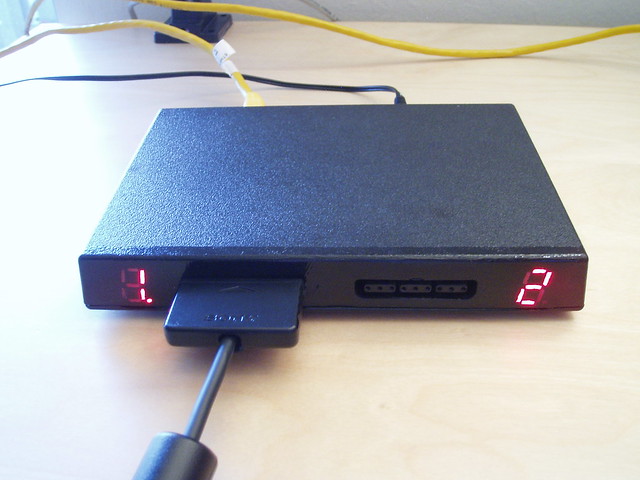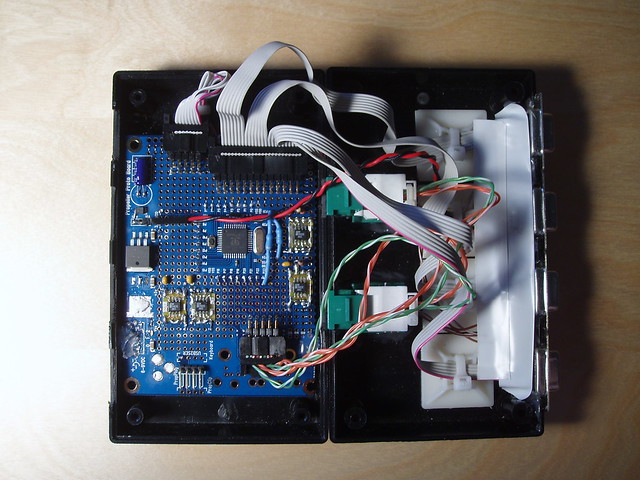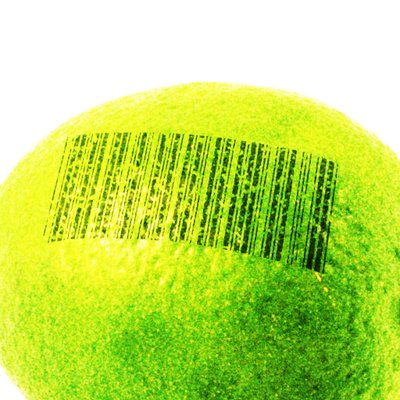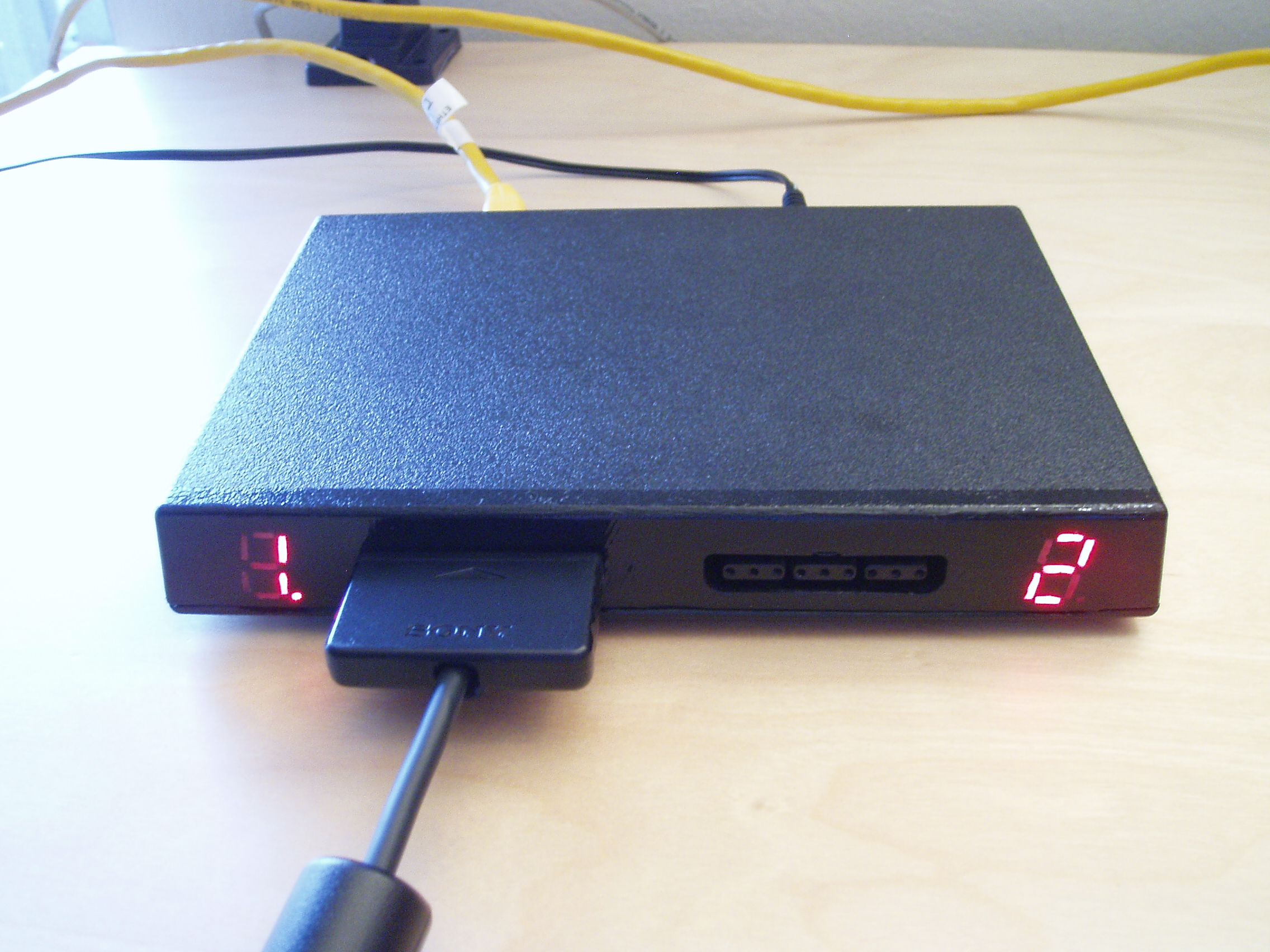The little hardware project I started almost 2 months ago is finally done. Completely finished. Bug free! Well, almost. It is, however, in a fully assembled state with firmware that is actually pretty usable.

The Unicone2 is the result of my mini-quest to extend Playstation 2 controllers over long lengths of cat5 cable. A while back I did something similar, extending Game Cube and N64 controllers over ethernet. That was the original Universal Controller Emulator, or Unicone. It used an FPGA, and a pair of Linux boxes. This time the design focus is low-latency, no PC required, and full support for Playstation 2 Dual Shock controllers and the Guitar Hero controller.
The Unicone2 went through a few redesigns before I settled on something I liked. The final version is based on a pair of microcontrollers and an asymmetric RS-422 link over cat5 cable. The remote end, where the physical controllers live, runs a PIC16F877A microcontroller. The base station, where all the consoles sit, uses the awesome Parallax Propeller, an 8-core microcontroller.
The remote unit’s job is pretty simple. It initializes and polls its two controllers, attempting to maintain a constant polling rate. The controller data is streamed over a very low-latency 250kbps RS-422 link. In its spare time, the PIC reads lower-bandwidth data (LED status, force feedback state) over an incoming 19200-baud RS-422 link.
The base station has a much harder job. It needs to emulate four controllers and receive data from two remote units simultaneously. These are all high-speed (250 to 500 kbps) asynchronous serial streams, with no flow control. It’s pretty much an intractable workload for most microcontrollers. I spent a long time trying to solve this problem with an FPGA, just like I did with the original Unicone project. This was working okay, but it was tedious. Playstation 2 controllers are even more complex than N64 controllers, and the problem doesn’t map well to the hardware domain.
When I first read about the Propeller, it seemed like a perfect solution to this problem. Just write one controller emulator, and run four copies of it simultaneously on different processors. The controller emulators and the RS-422 receivers communicate over shared memory, making the whole device quite low-latency. This also leaves plenty of CPU power and memory to emulate other flavours of video game controller, as well as leaving space to implement special effects like controller mixing and synchronized record/replay of controller events.

I’ll end the hardware rambling for today. Paul or I might have to post soon with some more info about the gameplay implications of the Unicone2. Besides acting as an extender, it can already act as a controller crossbar switch and mixer, which will let us experiment with improvised multiplayer action on single-player games.
Firmware and schematics are in Subversion.

